2016 Halls of Fame Inductees
EAA is proud to honor five new inductees into our Sport Aviation Halls of Fame at a dinner ceremony on November 10, 2016, in the Founders’ Wing of the EAA AirVenture Museum. The five inductees, representing ultralights, the International Aerobatic Club, Vintage Aircraft Association, Warbirds of America, and homebuilding, have dedicated their lives to their respective areas of aviation and join an esteemed group of individuals who represent the spirit of EAA in the highest form.
Ultralights: Tracy Knauss
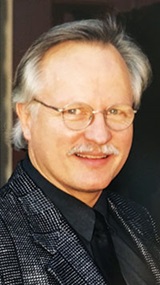
When Tracy discovered hang gliding in 1976, he saw the need for a publication that informed pilots about news, warnings, new products, flying tips, and, yes, even gossip. He formed a company called Glider Rider and started a magazine by the same name. It was immediately successful, and quickly became the go-to publication for hang glider pilots in the United States as well as in more than 60 other countries. “There is a commonality in flying that transcends language differences,” Tracy observed.
As the sport evolved and pilots started putting engines on their hang gliders, Tracy followed the trend, changing the magazine’s title to Ultralight Flying, and began including coverage of motorized ultralights. In its 40th year of publication, and now titled Light Sport and Ultralight Flying, the magazine covered hang gliders and ultralights of all kinds, both powered and unpowered.
International Aerobatic Club: Robert Armstrong, EAA 113152
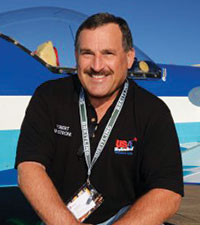
Robert built an S-1C Pitts Special and flew it first to Oshkosh, then down to Fond du Lac, Wisconsin, for his first aerobatic contest. Robert was the highest-scoring first-time competitor in Sportsman, and he counts that trophy as one of his most cherished. From that first contest at Fond du Lac, Robert met many fellow aerobatic enthusiasts involved in the IAC, finding them to be a helpful and friendly group of people. From then he was hooked and never wanted to leave. In 1988 Robert competed in the U.S. Nationals for the first time, winning second overall. Robert later began flying the CAP 231 and in his aerobatic career has flown in a total of 10 World Aerobatic Championships.
Robert has logged more than 17,000 hours of flight time, more than 5,000 of those in general aviation. This includes 1,600 hours of aerobatic time. The list of aircraft types he has flown exceeds 80. Robert is a retired airline pilot, having flown the 717 for 12 years at AirTran, and today flies a Citation XLS for a local company, allowing him the benefit of flying out of the same airport for both work and play.
Vintage: Phil Coulson, EAA Lifetime 71350
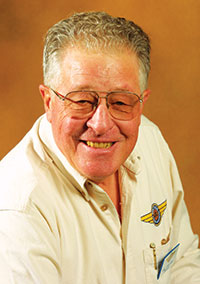
Phil began volunteering with EAA at Rockford, and then at Oshkosh, where he became an advisor in the Antique/Classic Division in 1985, followed by election to its board in 1987. During this period, Phil acquired a Waco UPF-7 open-cockpit biplane. The experience of owning the Waco, and the camaraderie with other owners that followed, led Phil and his friends to organize the American Waco Club (AWC) in 1993. Phil was named the founding president, a leadership position he continued until his retirement in 2013.
Phil also edited and published the Waco World News, the publication of the AWC. In addition to the UPF-7, Phil and his wife, Ruthie, have owned a G35 Bonanza, a Cessna 190, a Waco INF, a Waco 10, and a rare Waco UBA.
As a director of the Vintage Aircraft Association, Phil has chaired the annual Vintage Parade of Flight during EAA AirVenture Oshkosh and served as a long-term senior judge in the Antique category. Phil chose to take emeritus status with the VAA board in the fall of 2015 after nearly 30 years of active, involved, and dedicated service to both EAA and the VAA.
Warbirds: Doug Champlin, EAA 62048
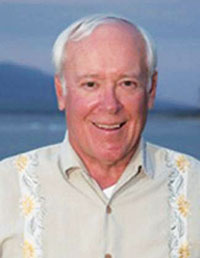
The Museum of Flight in Seattle, Washington, is now honored to be the permanent home of the Champlin Collection, proudly displaying Doug’s treasured airplanes throughout their Personal Courage Wing gallery. Doug was a member of the Museum of Flight’s board of trustees, and was gratified to see his collection remain intact when it was acquired by the museum and put on display in 2004.
Over the years, as he devoted his life to the acquisition, restoration, and display of so many rare and historic aircraft, for Doug, the most rewarding thing was the opportunity to meet fighter pilots from around the world and hear their stories firsthand. Those meetings led to many long-term friendships that he cherished until he passed away in May of 2013.
Homebuilding: Jim Bede, EAA Lifetime 3758
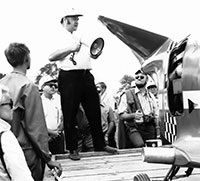
In 1971 Jim started the aviation world buzzing with the introduction of the BD-5 Micro. After the first flight, stability issues required a redesign, and Jim hired Burt Rutan to head the flight test department. One of the challenges faced by the BD-5 was the choice of engine. While searching for a reliable piston powerplant for the BD-5, Jim decided to create a jet-powered version. The BD-5J, best known for its role in the opening scenes of the James Bond film Octopussy, was a 300 mph manned bullet powered by a Sermel TRS-18-046 turbojet.
Jim was an active member of Chapter 1252, and there was no doubt about his passion for aircraft design. He devoted his life to helping people who had the dream of building and flying their own airplane. To those members in Chapter 1252, he was a mentor, a friend, a father figure, and a crazy old guy who loved to tell jokes. Jim passed away on July 9, 2015.
